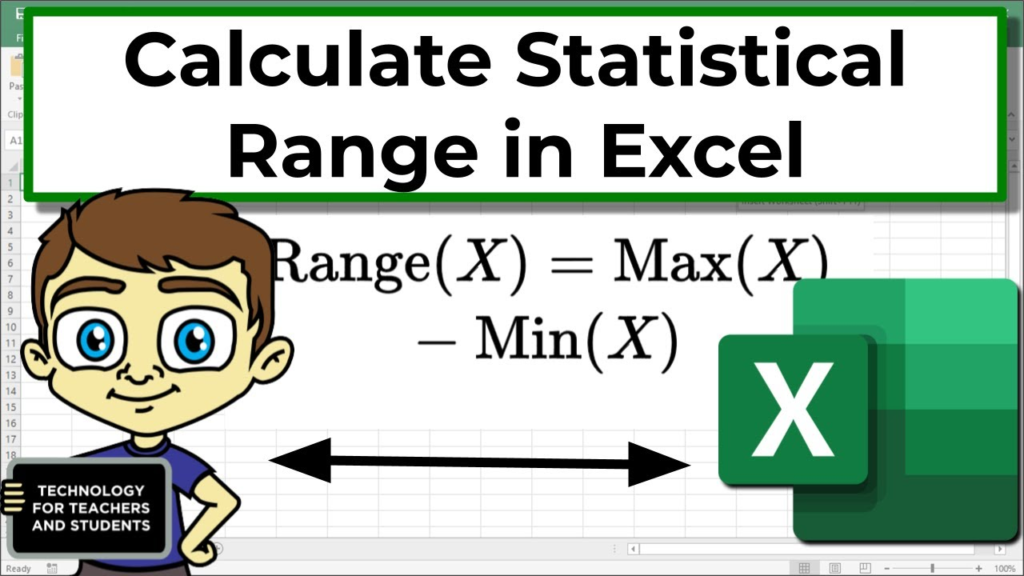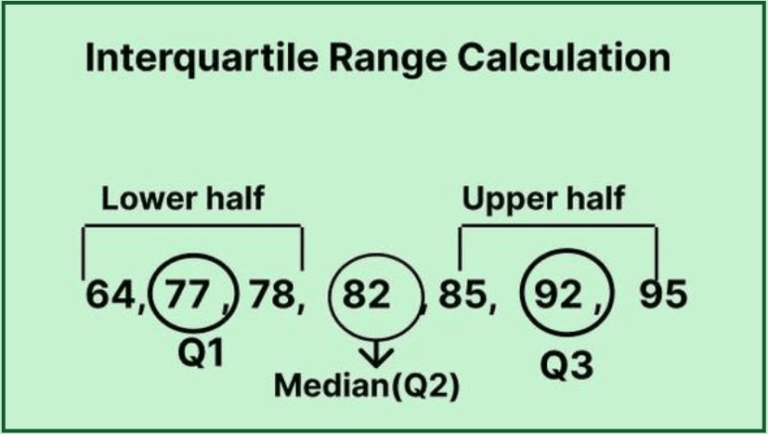Table of Contents
What does range mean in math? In simple words, the range is the difference between the highest and lowest numbers in a set. It helps us understand how spread out the numbers are. Whether you are working with data in statistics or solving equations in algebra, the range is an important concept to know.
Finding the range is easy! You just take the biggest number and subtract the smallest number from it. For example, if you have the numbers 3, 7, 10, and 15, the range is 15 – 3 = 12. This means the numbers in your set spread out over 12 units. In algebra, the range refers to the possible outputs of a function. Let’s explore more about this topic below!
What Does Range Mean in Math? A Simple Definition
Range is an important idea in math. It helps us understand how far numbers are spread in a group. The range is the difference between the biggest number and the smallest number in a set.
For example, if you have the numbers 4, 9, 15, and 20, the highest number is 20, and the lowest is 4. The range is 20 – 4 = 16. This shows how much the numbers change from the smallest to the largest.
In algebra, the range is the set of all possible answers for a function. This means the numbers that can come out when we put values into an equation. The range tells us how high or low the answers can go.
How to Find the Range in Math Step by Step
Finding the range is easy. Just follow these simple steps:
- Find the biggest number in the set.
- Find the smallest number in the set.
- Subtract the smallest number from the biggest number.
- The answer is the range!
For example, in the set 3, 8, 12, and 19:
- The biggest number is 19.
- The smallest number is 3.
- The range is 19 – 3 = 16.
This method works for any group of numbers. Just remember to find the highest and lowest values first.
Why Is Range Important in Math and Statistics?
Range helps us understand numbers better. It shows how spread out the numbers are. This is useful in math, science, and everyday life.
For example, in school, teachers check students’ test scores. If the highest score is 95 and the lowest is 60, the range is 35. This tells us how different the scores are.
In science, range helps find the difference between high and low temperatures. If the hottest day is 30°C and the coldest is 10°C, the range is 20°C. This shows how much the temperature changes.
Range also helps in business. If a store sells 50 to 200 items in a week, the range is 150. This helps the owner understand sales patterns.
Range Formula: The Easy Way to Calculate It

The formula for range is very simple:
Range = Highest Number – Lowest Number
For example, in the set 5, 10, 15, 20:
- The highest number is 20.
- The lowest number is 5.
- The range is 20 – 5 = 15.
This formula works in all types of math problems. Just find the highest and lowest numbers and subtract them.
Examples of Finding the Range in Real Life
Range is not just for school. It is used in many real-life situations. Here are some examples:
- Sports Scores: If a basketball team scores between 80 and 110 points in games, the range is 30.
- Weather Reports: If the hottest temperature in a city is 35°C and the coldest is 20°C, the range is 15°C.
- Business Sales: If a store makes between $500 and $1,200 a day, the range is $700.
These examples show that range helps us understand numbers better in everyday life.
Understanding Range in Algebra: What You Need to Know
In algebra, range means something different. It is the set of possible answers in a function. This is different from just finding the highest and lowest numbers.
For example, in the function y = x², if x is -2, -1, 0, 1, 2, the outputs are 4, 1, 0, 1, 4. The lowest value is 0, and the highest is 4. So, the range is 0 to 4.
Understanding the range of a function is important in advanced math. It helps in solving equations and drawing graphs.
Graphing the Range: How It Works on a Chart

A graph helps us see the range easily. The y-values in a graph tell us the range of a function.
For example, if a graph goes from y = 2 to y = 10, the range is from 2 to 10. Looking at a graph makes it easier to see how far the values go.
Graphs are useful in algebra and statistics. They show the range clearly, especially for big data sets.
Common Mistakes to Avoid When Finding the Range
Many students make mistakes when finding the range. Here are some common errors:
- Forgetting to subtract the lowest number from the highest number.
- Mixing up mean and range. The mean is the average, but the range is the difference between high and low.
- Not looking at all the numbers in the set. Always check carefully.
Avoiding these mistakes will help you find the correct range every time.
Range vs. Mean, Median, and Mode: What’s the Difference?
Range is different from other math terms. Here’s how:
- Mean is the average of the numbers.
- Median is the middle number in the set.
- Mode is the number that appears the most.
- Range is the difference between the highest and lowest numbers.
Each of these helps in different ways. The range shows how spread out the numbers are.
Fun Math Activities to Practice Finding the Range

Here are some fun ways to learn range:
- Roll a dice and find the range of numbers you roll.
- Check your daily temperature and find the range for a week.
- Look at sports scores and find the range of points.
Practicing with real examples makes learning fun and easy.
Conclusion
Range is an important math idea that helps us see how numbers are spread out. It is easy to find—just subtract the smallest number from the biggest number. Range is useful in school, business, sports, and daily life. It helps us compare numbers and understand data better.
By practicing, you can get better at finding the range. Try using it with test scores, weather reports, or shopping prices. The more you use range, the easier it will be. Math is fun when we understand how to use it in real life!
FAQs
Q: What is the range in math?
A: Range is the difference between the biggest and smallest numbers in a set.
Q: How do you find the range?
A: Subtract the smallest number from the biggest number.
Q: Can the range be zero?
A: Yes, if all the numbers are the same, the range is zero.
Q: Is the range always a whole number?
A: No, if the numbers have decimals, the range can have decimals too.
Q: Why is range important?
A: Range helps us see how much numbers change and compare data easily.
